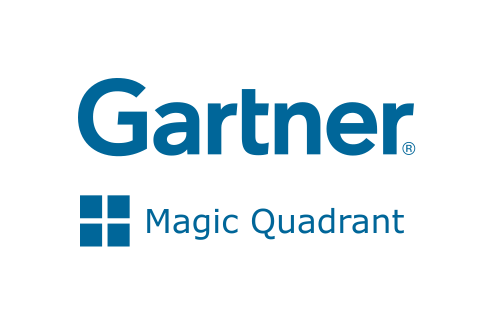The importance of network administration in modern businesses cannot be understated. Networks equip businesses to perform rapid information exchange, enabling them to receive increased demand from all over the world and globalize their operations. This also means that network downtime has become a costly ordeal that should be avoided at all costs. To that end, businesses employ network admins to administer, monitor, and manage network resources.
Gartner have calculated the cost of downtime to be around $300,000 per hour. A significant sum, which will financially cripple most businesses. For large organizations, the associated loss of reputation from downtime can be an even larger issue. People expect high speeds and constant availability for websites, so a delay as little as 2 seconds when loading a website can drive away a major portion of the potential traffic.
Businesses also have to uphold service-level agreements (SLA) to maintain quality of service. This means that they guarantee certain performance aspects of the network, like packet loss, mean-time-to-repair (MTTR), or response time. These SLAs might be legally binding, so businesses are obligated to uphold them.
Network admins are responsible for upkeep and maintenance of an organization's network infrastructure. They monitor network devices like servers, routers, switches and handle issues that may threaten normal network operation. Depending on the type of organization and the size of the network infrastructure, the roles of network admins may vary. However, they are expected to perform duties like:
Such an extensive list of responsibilities makes network administration an exhausting job. Not only do they have to be on high alert all the time, they also have to race against time to track down the source of an issue and fix it before users are affected. Most of the time, users are already affected by the time an issue is detected. Such scenarios are highly undesirable. It's no wonder then that most organizations and network admins use network administration tools to perform network monitoring.
OpManager is comprehensive network administration software that monitors network parameters to make the life of admins easier. OpManager collects critical metrics from network devices like routers, switches, and servers to warn admins of abnormalities. Admins can then take preemptive actions to ensure that no problems develop.
OpManager monitors availability of devices, interfaces, ports, services, and processes using protocols like ICMP, SNMP, and WMI. OpManager allows users to set device dependencies that prevent alarm flooding from dependent devices when the parent devices go down. OpManager also saves valuable processing power by suspending and disabling polls of unresponsive devices.
OpManager helps maintain QoS for service-level agreements by monitoring packet loss, jitter, and response time. When these metrics cross a user-set thresholds, OpManager generates alarms. OpManager can also push notifications via e-mail, SMS, slack, webhook, and more.
OpManager helps maintain the health of network devices like servers by monitoring key performance metrics like CPU utilization, memory, and disk space. Device performance starts to decline when these metrics approach capacity. Network admins can set multi-level thresholds to be warned of potential mishaps earlier and take timely action.

OpManager's observability features help network admins to attain visibility into their network infrastructure, detect anomalies and perform troubleshooting. AI and ML technologies saves networks from costly downtime and allows admins to perform more pressing tasks by automating routine tasks.
OpManager has an information-dense dashboard where network admins can view and access all critical information in one glance, such as a report of all compliance rule violations. OpManager also has maps—business views, layer2 maps, rack views, and 3D floor views—for better network visualization.
OpManager's array of intuitive tools helps network admins perform advanced network monitoring effortlessly. They include:
Discovery rule engine:: Network admins can create discovery rules to associate monitors automatically, add to business views, and add notification profiles to discovered devices. OpManager will perform these user configured actions on all discovered devices which fall under the discovery rules.
Adaptive thresholds:: OpManager analyzes normal network performance values and the use predictive algorithms to automatically set multi-level thresholds for key metrics. This takes a considerable load off network admins, as they wouldn't have to manually change thresholds based on network usage levels.
Root cause analysis:: OpManager's root cause analysis feature helps admins track down the source of an outage. They can compare data from over 20 monitors in one window to correlate changes in the data and deduce what went wrong.
NetPath analysis:: NetPath analysis is a powerful tool that can monitor WAN performance. It uses TCP requests to calculate the response times of WAN on a hop-by-hop basis. Network admins can view this data in the form of a network path with multiple branches to see in which node the fault lies.
Forecast reports:: Forecast reports are immensely helpful in capacity planning. Network admins are informed on time left till resource exhaustion occurs, based on trend lines of current usage.
Automated workflow:: Automated workflows save valuable time for your network technicians by automating routine tasks and troubleshooting. Automated workflows can perform level one automation on tasks like performing DNS look up, rebooting systems, and more.
Network troubleshooting tools:: These include tools like ping, traceroute, DHCP, CLI query, WMI query, etc. These tools come in handy to perform quick network issue troubleshooting.
ManageEngine also has a suite of IT operations management products to perform network infrastructure monitoring. They bundle smoothly with OpManager to provide a complete and holistic network administration tool.
With these add-ons and integrations, network admins can monitor applications and servers, analyze NetFlow, perform network configuration management, perform IP address and switch-port management, manage firewall performance, monitor bandwidth, and much more.
OpManager is tailor-made to suit your requirements and expectations for network administration software. Download OpManager to enjoy greater flexibility and control over your network, with less effort needed.
 Recognized as a May 2019 Gartner Peer Insights Customers' Choice for Network Performance Monitoring and Diagnostics Software
Recognized as a May 2019 Gartner Peer Insights Customers' Choice for Network Performance Monitoring and Diagnostics Software  Recognised as an April 2019 Gartner Peer Insights Customers' Choice for IT Infrastructure Monitoring Tools.
Recognised as an April 2019 Gartner Peer Insights Customers' Choice for IT Infrastructure Monitoring Tools.  Network Management and Monitor Vendor of the Year 2018, 2019
Network Management and Monitor Vendor of the Year 2018, 2019  Entered the 2019 Gartner NPMD Magic Quadrant.
Entered the 2019 Gartner NPMD Magic Quadrant.  Ranked #2 in the Infotech Research Software Reviews Data Quadrant 2018.
Ranked #2 in the Infotech Research Software Reviews Data Quadrant 2018.